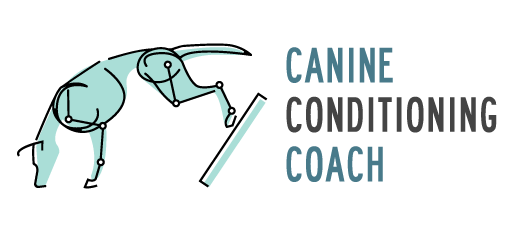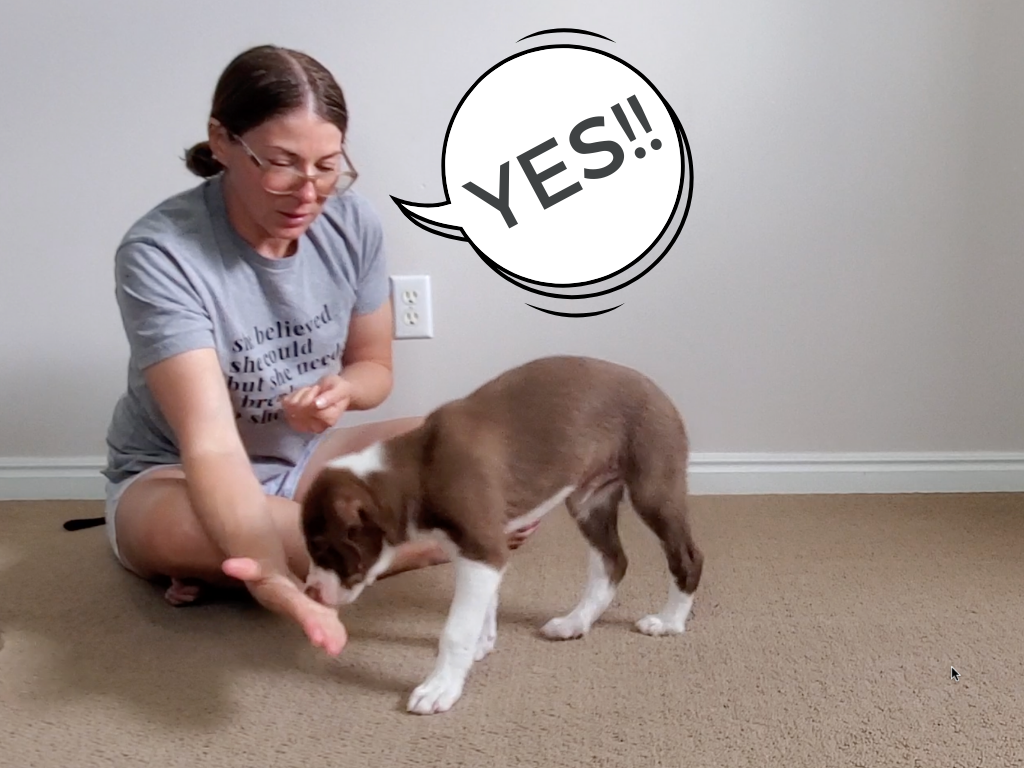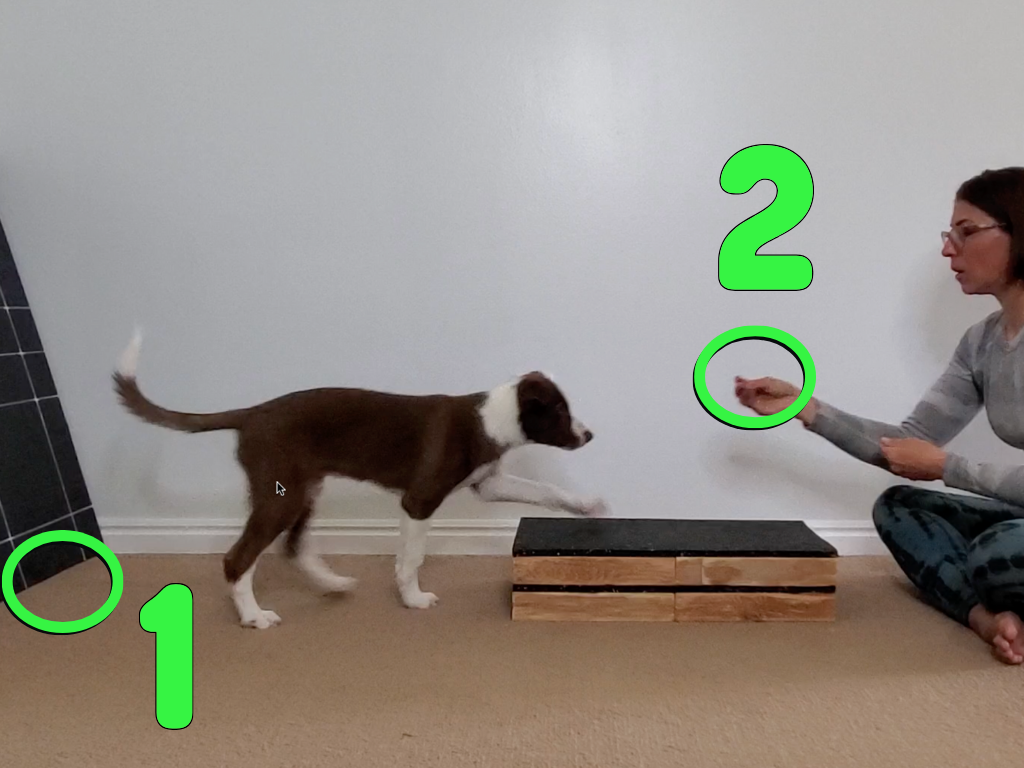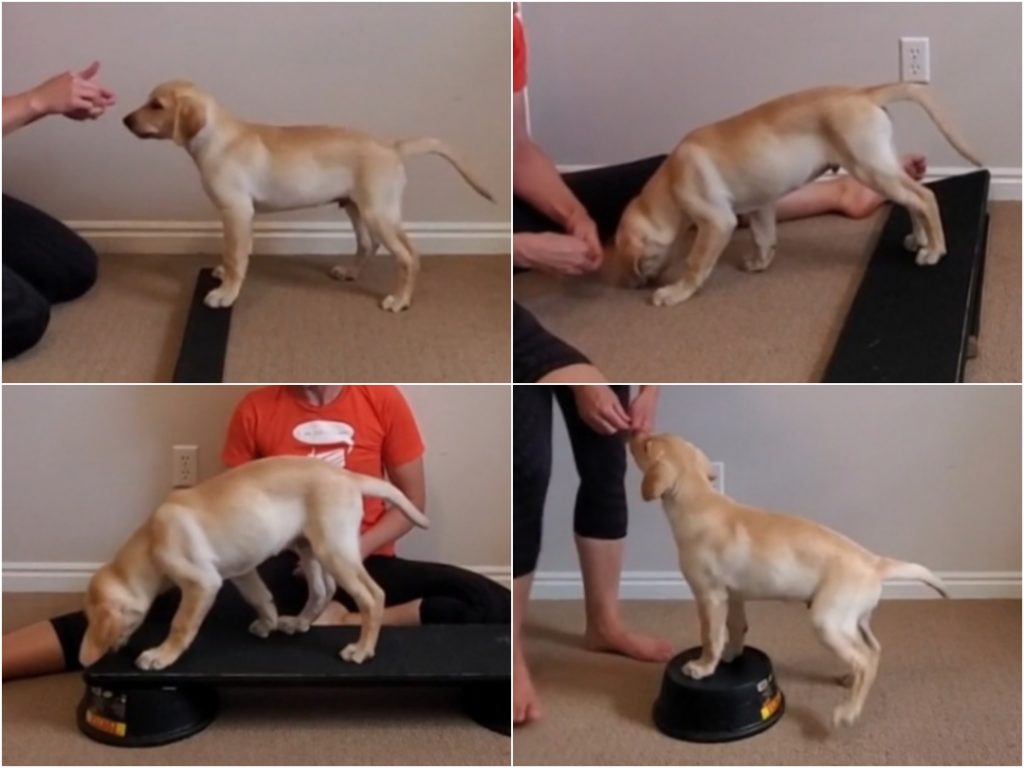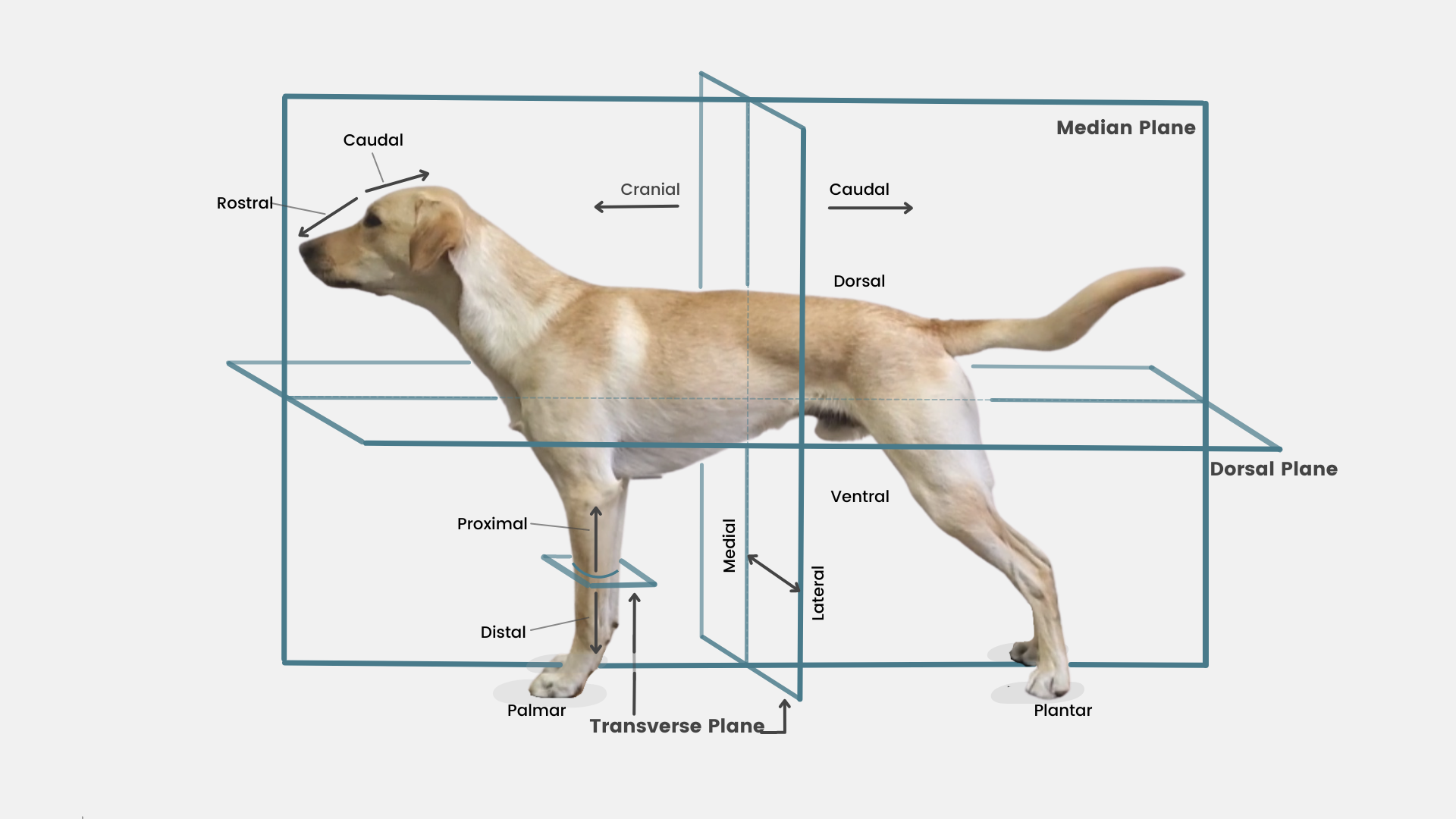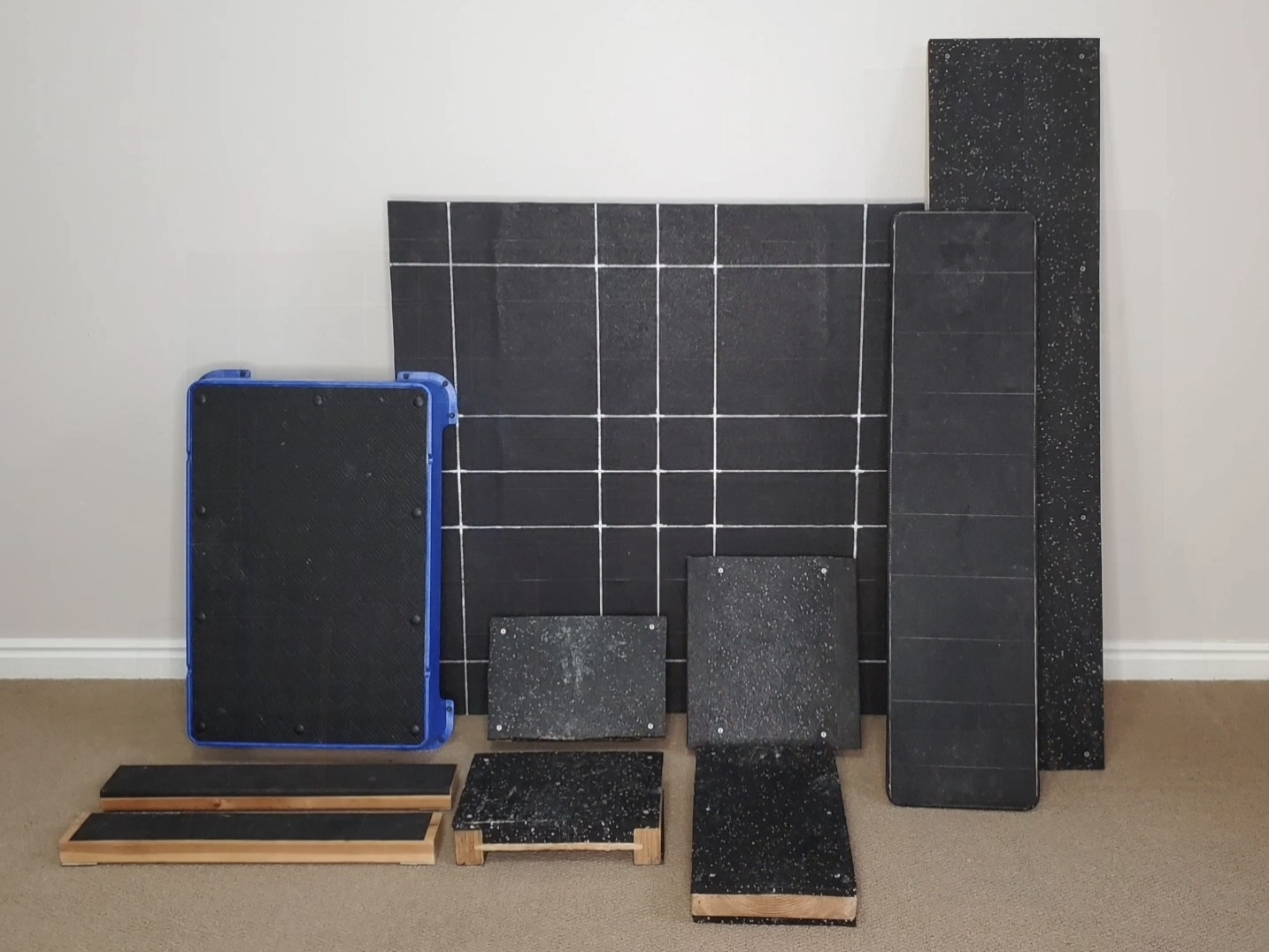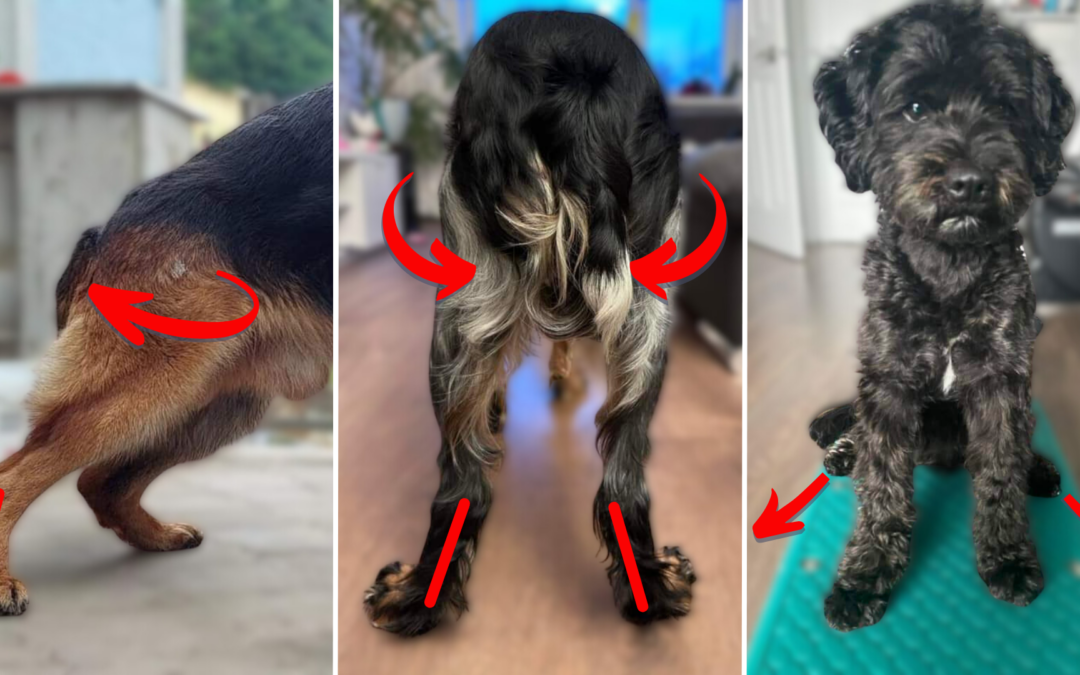Purpose: Following a tossed treat is a very valuable skill to have when introducing a dog to canine conditioning exercises, and not all dogs come with this skill “pre installed”. This is particularly true of baby dogs and older dogs, who may have trouble tracking the tossed treat visually. This video shows the method I used to teach this Pre Foundation skill to our new Border Collie pup David Rose!! It includes tossing the cookie against the backboard or wall, so the sound of impact helps the dog orient to the cookie’s location. I then rewarding from a flat hand / palm (not from the fingers) to prime David Rose for the exercise progression ~ Teaching a Marker Word (Part 1).
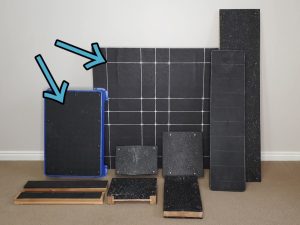
Equipment: Hard treats and a wall or backboard. The backboard I use is actually the Large Square Platform / Rocker Board shown in the photo above. A Cato Board or even just the wall can also be used.
NOTE: These Pre Foundation exercises are really training skills all future exercises are built upon. If your pup is struggling with arousal levels increasing / decreasing, frustration, giving up, or a general lack of understanding, incorporating these Pre Foundation skills is sure to help!!
Targets: Introduces the concept of following a tossed treat, and orienting to the sound the cookie makes when impacting the backboard, or wall. This can later progress into a location specific marker, if that is part of your training system. This method is also the foundation of the Training Loop I use throughout the entire Canine Conditioning Coach training protocol. This skill in particular will later become the “Reset Cookie” portion of that training loop.
Watchpoints:
1. It’s important to use hard treats (I use kibble) so the treat can be tossed far enough to impact the backboard or wall. Soft treats, like cheese, can stick to the hands, resulting in inconsistent reward delivery, and confusion for the dog.
2. If you make an error in your cookie toss, or the dog doesn’t orient properly, just toss another cookie! No problem! Try to avoid having your pup struggle at this point. Later when your pup understands this, you will be able to rely on your verbal “Get it” cue (or other location specific marker) to help rescue your pup. But that comes much later.
3. Keep in mind we are teaching two things with this skill… Tracking and following the tossed treat, and also reorienting to the handler to receive a second cookie. We want to build value to both portions of the behavior chain. So rewarding with the tossed treat is important, as is the cookie delivered from the flat hand.
